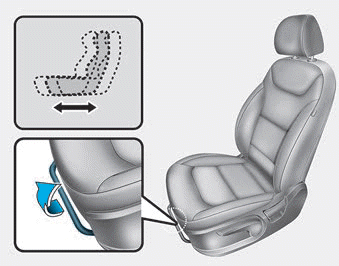Hyundai Ioniq: Fuel Delivery System / Fuel Pump Control Module (FPCM). Repair procedures
Hyundai Ioniq (AE) 2017-2025 Service Manual / Engine Control/Fuel System / Fuel Delivery System / Fuel Pump Control Module (FPCM). Repair procedures
| Removal |
| 1. | Turn the ignition switch OFF and disconnect the battery negative (-) cable. |
| 2. | Remove the rear seat cushion. (Refer to Body - "Rear Seat Assembly") |
| 3. | Remove the fuel pump service cover (A).
|
| 4. | Disconnect the fuel pump control module connector (A). |
| 5. | Disconnect the fuel pressure sensor connector (B). |
| 6. | Disconnect the fuel feed tube quick-connector (C).
|
| 7. | Remove the fuel pump locking ring (B) with SST (A) [SST.: 09310-F3100].
|
| Installation |
| 1. | Install in the reverse order of removal. |
| Inspection |
| 1. | Connect the GDS to the vehicle's data link connector (DLC). |
| 2. | Check any DTCs and if exist, repair according to the DTC guide. |
| 3. | Check the power supply voltage provided to the fuel pressure sensor (FPS).
|
| 4. | Check the voltage provided to the fuel pressure sensor (FPS) at idle.
|
| 5. | Check the fuel pressure in the low fuel line. (Refer to Fuel Delivery System - "Fuel Pressure Test")
|
 Fuel Pressure Sensor (FPS). Description and operation
Fuel Pressure Sensor (FPS). Description and operation
DescriptionThe fuel pressure sensor (FPS) is installed on the top of the low pressure fuel pump and measures the pressure in the low pressure fuel line...
Categories
- Manuals Home
- 1st Generation Ioniq Owners Manual
- 1st Generation Ioniq Service Manual
- Coasting Guide (Plug-in hybrid vehicle)
- Reverse Parking Aid Function
- Theft-alarm System
- New on site
- Most important about car
Manual adjustment
The front seat can be adjusted by using the levers located on the outside of the seat cushion. Before driving, adjust the seat to the proper position so that you can easily control the steering wheel, foot pedals and controls on the instrument panel.
Forward and rearward adjustment

Copyright © 2025 www.hioniqae.com










